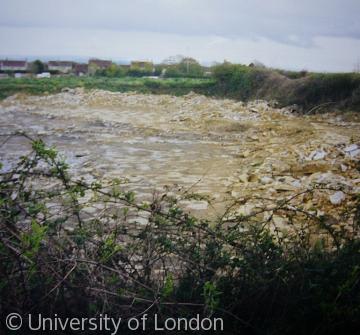Keinton Mandeville quarries

Keinton Mandeville village lies in the centre of the parish around the T junction formed by High, Castle, and Queen Streets. Its appearance, and the scars of old quarries, point to its industrial past. The main area of the parish lies entirely on the Lower Lias; the beds of stone lying close to the surface in many places were ideal for paving slabs[1] and produced ichthyosaurs, one collected by Thomas Hawkins, and other important fossils.[2]
In the later 18th and the 19th century quarrying lias for paving and other building provided the principal occupation of the inhabitants of Keinton Mandeville. In the 1780s stone was sent ‘considerable distances’ for internal and external paving and for gravestones[3] and fifty years later was supplied for a house beyond Salisbury.[4] In the 1840s stone was supplied to Castle Cary church and many neighbouring villages such as West Lydford have paving and fencing slabs of Keinton stone.[5] In the 1880s the principal quarry owner supplied stone paving, steps, sills, landings, curbs, and guttering as well as tombs, headstones, and tablets not only in the local lias but also in a wide variety of other stones.[6
[1] Geol. Surv. Map 1:50000, solid and drift, sheet 296 (1973 edn).
[2] Preserved at the Natural History Museum, London. Some plesiosaur remains from Keinton are in the County Museum, Taunton.
[3] SRO, A/AQP 9/32.
[4] M. Cowan (ed.), The letters of John Peniston, Salisbury architect, Catholic and yeomanry officer, 1823—1830 (Wiltshire Rec. Soc. 50, 1996), 149, 163.
[5] SRO, D/P/cas 14/5/1; below, West Lydford.
[6] Kelly’s Dir. Som. (1883), adverts. p. 36
Content generated during research for Victoria County History Somerset Volume X. More information is available on the VCH Somerset website



